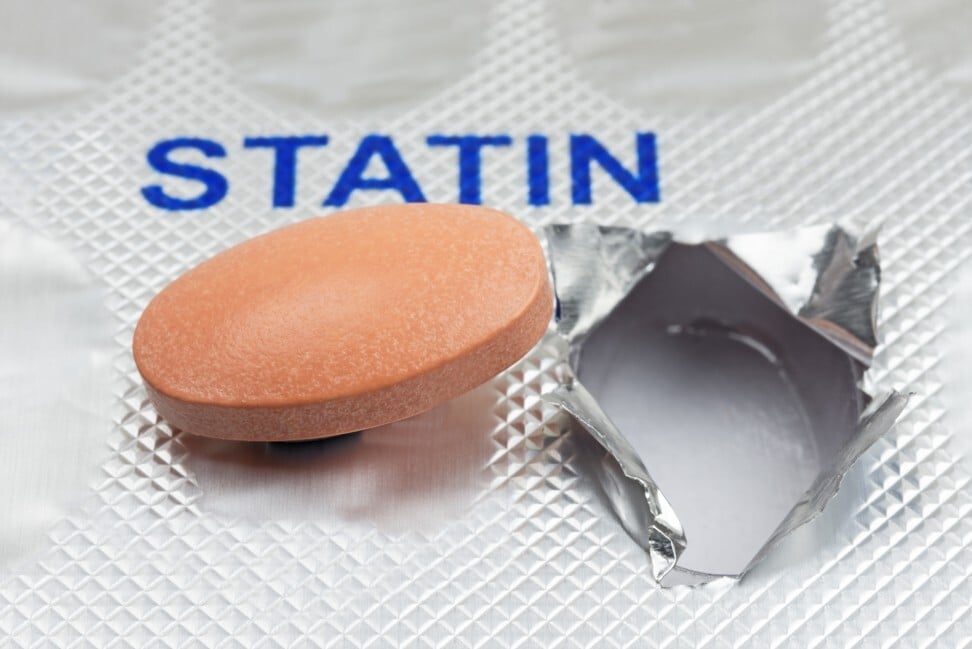
Asia worst for cholesterol amid diet and lifestyle changes – what you can do to lower yours
- You don’t want high cholesterol, especially of the bad kind – it can damage arteries, cause heart disease and increase the risks of stroke and heart attack
- An academic and father explains how he lowered his cholesterol by adopting a vegetarian diet. A doctor says to eat less red meat and do regular exercise
A study of global cholesterol levels, led by Imperial College London, uncovered a surprising development: while levels in Western nations have dropped sharply, Asia is now the epicentre of cholesterol dangers.
This result does not surprise Dr Michael Chan Pak-hei, an honorary consultant in cardiology at Gleneagles Hospital Hong Kong, given the westernisation of behaviours in Asia, where people are consuming more fast food and taking fewer statins, drugs that lower cholesterol.
Guidelines on managing so-called “bad” cholesterol – or low-density lipoprotein cholesterol – from organisations such as the European Society of Cardiology (ESC) are not as well recognised in Asia, and statin prescriptions vary as a result, says Chan.
“[Research] shows statin use is less widespread in most [Asian] countries. Even in Chinese populations, doctors tend to be less aggressive in following recommended guidelines – instead of using high-intensity statins, they may try medium-intensity statins first for patients,” he explains.

According to Chan, US guidelines including those from the American College of Cardiology recommend that those with underlying coronary heart disease should aim for LDL cholesterol of less than 1.8 mmol/L (millimoles per litre of blood), or the ESC’s recommendation of 1.4 mmo/L. (He usually aims for the lower level for his high-risk patients).
For healthy, low-risk patients, the optimal goal is less than 2.6 mmol/L according to American guidelines, or 3 mmol/L according to European guidelines.
The researchers analysed data in 102.6 million adults from 200 countries from 1980 to 2018. The results, published in the journal Nature, found high cholesterol contributed to 3.9 million deaths worldwide, and half of those deaths occurred in Asia.
At 39, in the best shape of his life, he had a heart attack
Cholesterol is needed to build cells in the body, for example, and there are different types. Non-high-density lipoprotein (non-HDL) is your total cholesterol minus your HDL – another metric for all the bad cholesterol circulating in your blood, not just your LDL cholesterol. Too much of it can collect in the vessel walls of the arteries and promote plaque formation, a condition known as atherosclerosis.
It can lower the blood flow to the heart muscle, causing coronary artery disease, or to the leg muscles, causing peripheral artery disease. It may lead to the sudden closure of an artery in the heart or brain, triggering a heart attack or stroke. High-density lipoprotein (HDL), a good cholesterol, helps remove excess bad cholesterol.

The study found bad cholesterol levels have declined significantly since the 1980s in the West, particularly in North America and many regions in Europe. However, in Asia, bad cholesterol levels were rising in places such as China, Indonesia, Thailand, and Malaysia. China has one of the highest non-HDL rates, ranked at 100th for women and 99th for men (compared to 152nd and 153rd in 1980).
According to the research authors, the declining trend in the West since 1980 began before statins were widely used. “This indicates that changes to diet, especially the replacement of saturated with unsaturated fats and reduction in trans-fats, are major contributors to this decline,” the paper stated.
It noted the reverse trend in Asia, that “consumption of animal-source foods, refined carbohydrates and palm oil has increased substantially in east and southeast Asia, where statin use remains low”.

Forgoing meat helped Jeff Saunders rein in his cholesterol after learning it was a problem for him in 2012 at age 42. “Changing your lifestyle through diet and exercise makes a difference,” says the American psychology professor from the University of Hong Kong.
Saunders’ father takes cholesterol-lowering medication, making him mindful of this condition, so he got his own levels checked early.
“I can’t remember the numbers, but the doctor said: ‘We need to get you on medication right away’,” recalls the 50-year-old. Not convinced he was in the high-risk category, having never had a heart attack, Saunders instead attempted lifestyle changes. “I felt pretty healthy and didn’t feel the urgency to go on medication.”

The vegetarian convert now fills his plate with pulses, vegetables and meatless dishes, such as falafel patties made from chickpeas, and tacos with beans and corn.
Saunders does not need to scrutinise nutritional food labels for fat and cholesterol content now. “By taking this simple step, you rid bad fats from your diet, and it’s usually animal [sources] where you get the problematic kinds,” he said, adding that he is only watchful of foods such as cheese and eggs.
A year-and-a-half after he changed his diet, his bad cholesterol levels have fallen to near normal. He now needs to gets them checked only every two or three years. To keep his level normal, Saunders exercises three times weekly at the gym and takes part in swing dancing sessions.

Chan usually treats high cholesterol with medications such as statins or PCSK9 inhibitors. (Liver cells have receptors that remove excess cholesterol, but a protein called PCSK9 destroys them. The inhibitors grab onto PCSK9 proteins to block them from acting.)
For patients who do not want to give up meat, the cardiologist suggests the more balanced Mediterranean diet that is rich in vegetables, fruits, fish and olive oil.

“Not all fats are bad,” Chan says. He encourages a shift to eating less saturated fats and trans-fats, and more unsaturated fats such as fish and olive oil. He recommends reducing intake of red meat, which is high in saturated fat and cholesterol, and opting for lean meats such as skinless chicken.
Adopt moderately intense exercise for at least three hours a week, he advises.
“Regular exercise can bring down bad cholesterol by 10 per cent and increase good cholesterol by 10 per cent, so it’s an effective treatment.”

